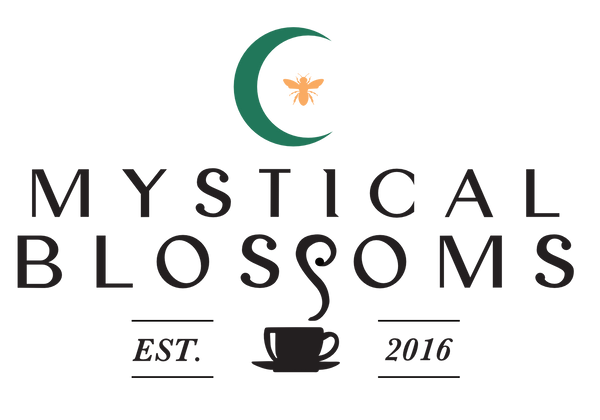*The Content is not intended to be a substitute for professional medical advice, diagnosis, or treatment. Always seek the advice of your physician or other qualified health provider with any questions you may have regarding a medical condition. This is an honest account of my personal experience and advice that I personally received from my doctor. Please research for yourself, use your intuition as your guide, and seek out the best doctor for you.
By Michaline Koveloski
So many people have dairy allergies or intolerances that it's not uncommon to see more varieties of non-dairy milks filling the shelves than the varieties of dairy milk that used to be standard ten years ago. I, myself, started drinking almond milk about nine years ago because I liked it better. I didn't have an intolerance. It was my preference. However, people are scrambling for substitutes because they have to. As I started becoming more aware of what is in products (reading labels!), I started questioning how the coconut and almond milks were so damn thick and tasty. I used to see "gum" but didn't want to admit is was probably something that wasn't good for me. Sometimes, you're just spent and you decide it's better than "something else" and you move on feeling okay about your choice.
As time went on, I began trying different varieties of coconut with almond, just almond, just coconut, rice, then the different brands of every variety, then whatever was on sale. In my mind, it was better than milk from a cow. I don't know why, but at some point I felt grossed out by cow's milk. I recently learned, however, that milk is extremely nutritious from Dr. Teitelbaum and she explains why. The main issue is people's digestion. If that's not up to par, then milk can be hard to digest. If you are also combining it with other improper foods in the stomach, that could be another factor. The biggest take-away, however, is that the milk in the store is processed. It's pasteurized and homogenized so it's appealing, bacteria is killed and the cream doesn't rise, and this alters it's integrity. The better types can truly do the body good.
Dr. Teitelbaum is an Ayurvedic doctor in Cinnaminson, New Jersey and utilizes the techniques of kinesiology which employs muscle testing to find imbalances in the patient's physiology. I've been taking my son, David, to her for a month and I'm amazed at how well he is responding to the natural healing. It was almost instantaneous. David can't have the cow's milk yet, so I'm making the homemade almond milk that she suggested. Until his digestion comes back to balance, I'm making this and loving it. But first, I do want to include the exact information she gave us on cow's milk, because I feel that many people have been shunning something that is really beneficial to their bodies. If your digestion is optimal and you like milk, you may want to consider these sources and be sure to boil it before using, as stated below.
According to Dr. Teitelbaum, these are the three best types of milk to favor:
1. First best is A2 raw milk - available from Miller's Organic Farm (717-556-0672), Radiance Dairy in Fairfield, Iowa, and a few other locations around the country. This is the type of milk found in ancient times when the cow breeds were only A2. Nowadays, they are mainly of the A1 genetic type, which contains a protein that is difficult for many people to digest. Don't buy the A2 milk from Whole Foods, as it is processed, which ruins its good qualities.
Another source of raw milk is:
Gita Nagari Eco Farm Sanctuary | 534 Gita Nagari Road | Port Royal, PA 170825
2. Second best milk is raw milk, which means it wasn't homogenized or pasteurized (available in our area from Reading Terminal Market in Philadelphia and other Amish food stands in PA). Raw milk is illegal in New Jersey, but you may have better access where you are from.
3. Third best is unhomogenized milk (still has the layer of cream on the top) available at Whole Foods Market in the glass bottle with the white lid from Trickling Springs Dairy.
Do not drink it cold, but always boil it right before using it. Boiling it kills any infection in the milk and breaks down the fat globules in the milk which aids in its assimilation into the cells.
Another note from Dr. Teitelbaum:
We always want the full fat milk because the fat in the milk delivers the calcium in the bones. Low fat and skim milk can cause osteopenia and osteoporosis as the calcium comes in one end of the digestive tract and out the other. If you feel the full fat milk is too heavy for you, boil half milk, half water - this way the prana (life force energy) is still intact in the milk.
I haven't tried any of the real milks yet, but I can't wait until I do. The recipe for almond milk below doesn't yield a lot. I followed it the first time, and have been making bigger batches lately. I add a touch of maple syrup to sweeten, instead of the sugar, and it's delicious.
Dr. Teitelbaum also mentioned not to leave skin on because the skins contain lectins which are compounds that are bad for your health.
NOURISHING HOME-MADE ALMOND MILK
(courtesy of Dr. Marianne Teitelbaum | Cinnaminson, NJ)
• 1/2 tsp. arrowroot powder
• 1 to 2 Tbsp. organic sugar (evaporated cane juice)
Soak 1/2 cup almonds (with the skins on) overnight in a bowl of water.
In the morning peel the almonds and put them into a blender or food processor with spring water to cover, 1/2 teaspoon arrowroot powder (available at Wholefoods Market in the flour section), 1 to 2 tablespoons of organic sugar (evaporated cane juice).
Blend for two minutes and strain (you can purchase a nut milk bag on amazon) and you have your own almond milk! It's loaded with essential fatty acids, for the brain, and calcium for the bones, and numerous other nutrients.




